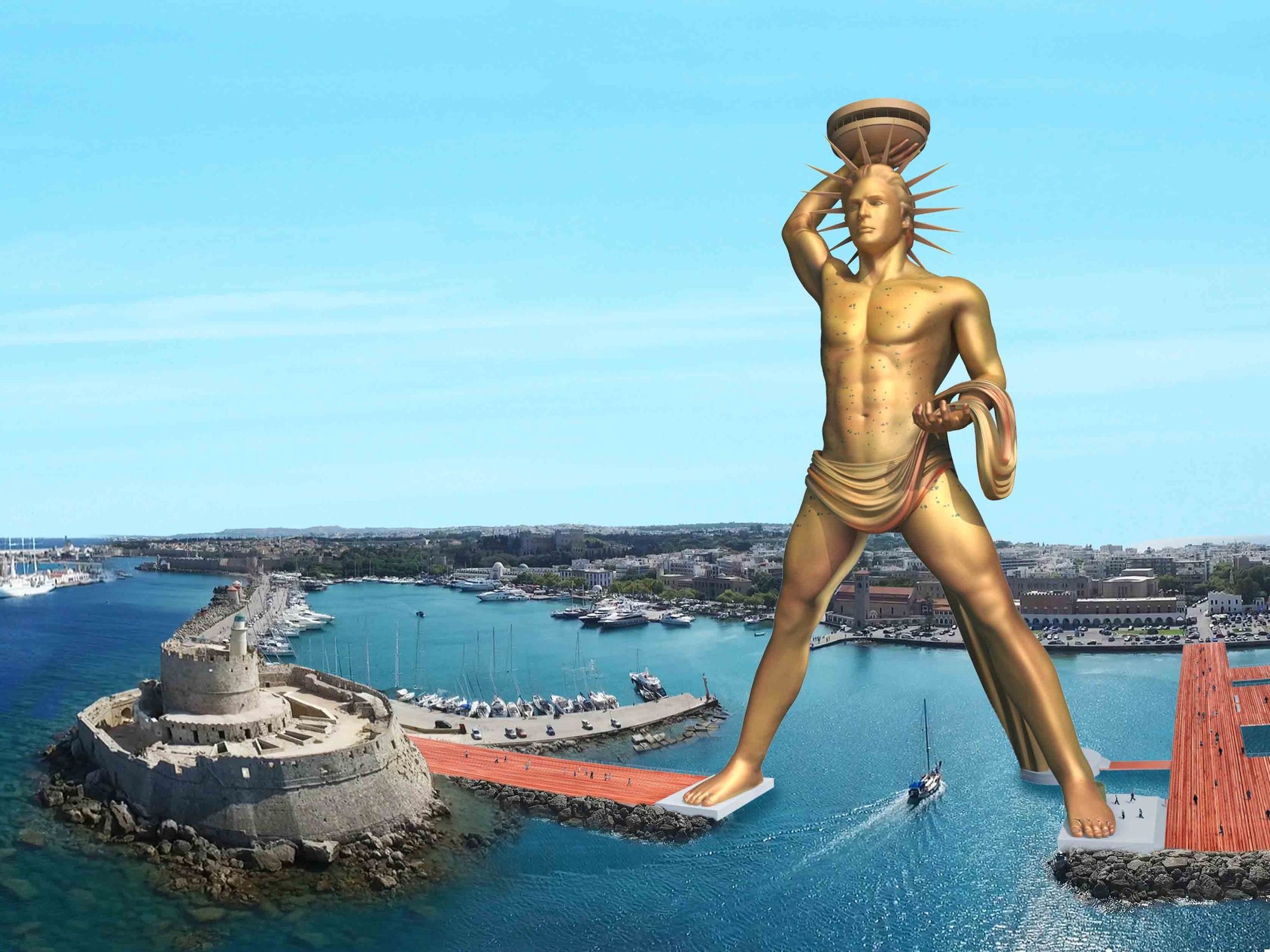What happened to the Colossus of Rhodes?
The Colossus of Rhodes was a giant statue of the Greek god Helios, erected on the Greek island of Rhodes in the harbor of its capital city, also named Rhodes. The most famous period in Rhodes’ history is undoubtedly the era of the Colossus. Following their victory over an invading Macedonian army in 304 BC, the people of Rhodes decided to erect a massive statue of the sun god Helios to commemorate their triumph. The Colossus, standing over 30 meters tall, became one of the Seven Wonders of the Ancient World.
The Colossus was constructed between 292 and 280 BCE by Chares of Lindos, a Greek sculptor. It was commissioned to celebrate the victory of Rhodes over the invading Macedonians. The statue was made primarily of bronze, with an iron and stone framework.
The Colossus was an enormous statue, standing over 30 meters (approximately 100 feet) tall. It depicted Helios, the Greek sun god, holding a torch in one hand and standing with his legs apart. Though commonly depicted straddling the harbor entrance, there’s debate among historians whether this was accurate.
While the original location of the Colossus is debated among historians, it’s believed to have stood near the entrance of the Mandraki Harbor in Rhodes, Greece. Today, visitors can explore the harbor area and imagine the grandeur of the statue that once adorned it.
The Colossus stood for only around 60 years before it was toppled by an earthquake in 226 BCE. According to historical accounts, the statue snapped at the knees and collapsed. The ruins lay on the ground for centuries.
The remains of the Colossus were never fully removed from the site. In fact, they became a popular tourist attraction for ancient travelers. However, the site gradually lost its fame, and eventually, it was forgotten.
Despite its relatively short existence, the Colossus of Rhodes left a lasting legacy. It inspired awe and wonder in the ancient world, and its image has been reproduced in various forms of art and literature throughout history. The idea of the colossal statue standing at the entrance of a harbor has become iconic.
Today, while there are no remains of the Colossus itself, the image and legend of this monumental statue continue to capture the imagination of people around the world. The harbor area where the Colossus was said to have stood is still a significant historical site on the island of Rhodes.

